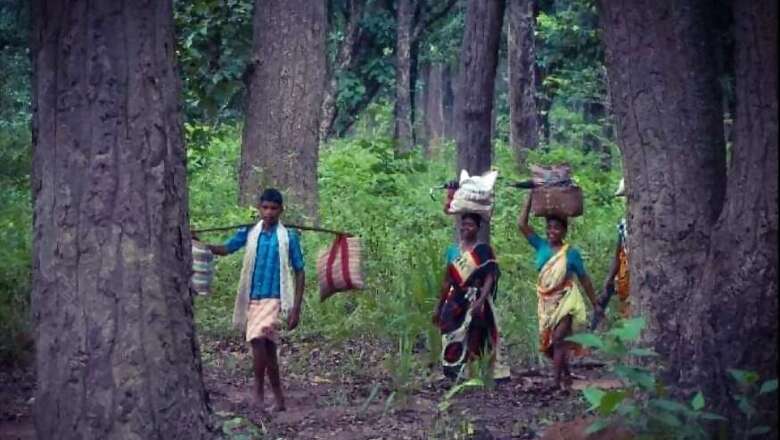
views
Tribal voices were almost absent from the electoral discourse of 2019.
Due to their presence in clusters and in the interiors, they are not part of our everyday electoral discussions.
Their aspirations, desires and underdevelopment rarely became the issues of 2019 parliamentary election.
Even the recent Maoist attacks brought tribal regions in focus, but their people and communities continued to live in the periphery.
Their participation in the politics of democracy is also not adequate or equally distributed. The development of political leadership among tribal communities has not been horizontal, but vertical.
This means political consciousness is limited only among a section of tribal communities, especially the larger ones like Kol, Gond and Kharwar in the forests of Uttar Pradesh.
The seventh and last phase of the 2019 parliamentary election took place in the tribal regions of Uttar Pradesh.
This zone, mostly concentrated in the Mirzapur, Robertsganj and Sonbhadra areas of UP, stretches to Bihar, Madhya Pradesh and Jharkhand.
Communities like Kol, Gond, Majhwar, Kharwar, Bind, Dhakar, Chero, Panika, Bhuiya, Dhangar, Bhuinyar, Agaria, Korwa, Pathari, Ghasia and Parahiya reside in these areas.
As Kols, Gonds and Kharwars have a bigger population, most of the tribal political leaders are from these communities.
Smaller groups like Agariyas, Dhangars, Panikas, Ghasias and Parhiyas have not yet able to produce political leaders from their communities.
Political agencies which are working among tribal groups and generating consciousness are Gandhians, Naxalites and Sangh parivar, i.e., the Rashtriya Swayamsevak Sangh (RSS).
Smaller political groups like Pathargarhis are also active in the region, especially in UP, Bihar and Madhya Pradesh.
While Gandhian groups are working among them to explore their traditional qualities and improve the quality of their education and health, Naxalites are trying to mobilise them on anti-state lines and evolve a parallel administration.
Though Naxal activities have reduced in the recent past, extreme Leftist consciousness is still alive.
Meanwhile, the RSS is working hard to bring the tribals on the Hindutva line. It is opening several schools, hospitals and institutions providing basic amenities in the villages.
One such school has been established in the Duddhi region of Sonbhadra. The school imparts lessons on Hinduism from religious books and texts to tribal children. A healthcare facility is also coming up.
A temple with idols of Hindu as well as tribal deities is also being set up.
The RSS is even trying to revive archery skills among the tribal youth, who are known for their traditional knowledge and skills. It is working to evolve tribal bastis located in the forest areas as ‘dharm’ villages.
However, in the process of disseminating Hindu values, the saffron outfit has ensured that it gives space to tribal values and reinterpret them in a Hindutva frame.
The politics of ‘sewa’ is similar to the techniques of Christian missionaries who too work among tribal and marginalised communities of society.
All these political processes are helping in the evolution of a section of social and political leaders among tribal communities in this region.
The tribals have a lot of complaints against the forest department and its officers because of the various oppressive restrictions in using forest produce, their livelihood.
They share an antagonistic relationship with the local police. Contractors of tendu leaves and other forest produce are also oppressive sometimes.
Hence, these communities want the state to ensure a life free of oppression. They also seek basic facilities and development that would accommodate their traditional ways of life.
Meanwhile, they need to raise leaders from their own communities who can represent their voices, desires and help the Indian state evolve creative developmental policies for them.
(The author is professor and director of GB Pant Social Science Institute, Prayagraj. Views are personal)



















Comments
0 comment